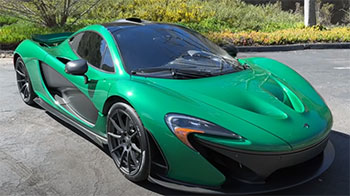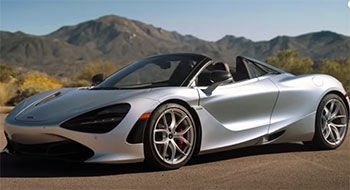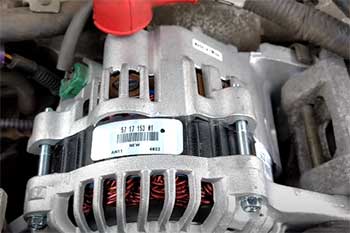I’ve always been captivated by the raw power and precision of McLaren’s supercars, and pitting the legendary P1 against the razor-sharp 720S feels like a dream showdown. As an enthusiast who’s spent time behind the wheel of both, I’m here to share my journey, breaking down their strengths, weaknesses, and what makes each a masterpiece.
This article compares these two beasts through a first-person lens, highlighting their performance, design, and real-world feel with a detailed pros-and-cons analysis and a comparison table. Buckle up as we explore which McLaren reigns supreme for you.
Comparison Table: McLaren P1 Vs. McLaren 720S
| x | McLaren P1 | McLaren 720S |
|---|---|---|
| Engine | 3.8L Twin-Turbo V8 + Electric Motor (Hybrid): 903 hp, 664 lb-ft torque | 4.0L Twin-Turbo V8: 710 hp, 568 lb-ft torque |
| 0-60 mph | 2.8 seconds: Blistering acceleration with hybrid boost | 2.8 seconds: Matches P1 with lighter weight |
| Top Speed | 217 mph (limited): Electronically capped for safety | 212 mph: Slightly slower but thrilling |
| Weight | 3,280 lbs: Heavier due to hybrid system | 3,128 lbs: Lighter, enhancing agility |
| Price (MSRP) | $1,150,000 (2013): Hypercar exclusivity | $299,000 (2017): More accessible supercar |
| Fuel Economy | 18 MPGe (EPA): Hybrid efficiency for a hypercar | 17 mpg (combined): Pure gas, less efficient |
| Transmission | 7-speed dual-clutch: Seamless shifts | 7-speed dual-clutch: Smooth, track-ready |
| Production | 375 units: Limited, collectible | Ongoing: More available |
My Experience With McLaren P1

Sliding into the McLaren P1 feels like stepping into a spaceship.
The carbon-fiber monocoque, exposed in the cockpit, screams exclusivity, and the Alcantara-wrapped seats hug you at a 28-degree angle, blending comfort with a track-ready posture.
My first drive was on a winding coastal road, and the P1’s hybrid powertrain—combining a 727-hp V8 with a 176-hp electric motor—delivered a surreal 903 horsepower.
The Instant Power Assist System (IPAS) gave me an instant surge, like a jet taking off, while the Drag Reduction System (DRS) made high-speed straights feel effortless. It’s raw, almost intimidating, with every pebble on the road transmitted through the stiff chassis.
On a track day, the P1’s active aerodynamics, generating 600 kg of downforce at 160 mph, kept it glued to corners, but the firm ride demanded focus. The steering is razor-sharp, and the brakes—carbon-ceramic, of course—bite hard.
Yet, daily driving revealed its quirks. The low ground clearance scraped on speed bumps, and rear visibility is poor, making parking a challenge without sensors. Maintenance costs loomed large; a battery replacement could hit $100,000, and out-of-warranty repairs are steep. Still, the P1’s exclusivity and visceral thrill make it a collector’s dream, a car that commands attention and respect.
The P1’s hybrid tech, a pioneer in 2013, feels like a bridge between old-school power and modern efficiency. Its 18 MPGe rating is impressive for a hypercar, and the electric mode let me cruise silently for short stints. But it’s the drama—the howl of the V8, the futuristic styling inspired by a sailfish—that stays with me. Driving it feels like a privilege, a rare chance to tame a beast that’s as much art as machine. For enthusiasts chasing history, the P1 is unmatched.
Read More: My Thoughts On BMW X7 Vs. Cadillac Escalade
Pros Of McLaren P1
- Hybrid Powertrain: The 903-hp combo of a 3.8L V8 and electric motor delivers explosive acceleration and a unique driving experience, blending efficiency with raw power.
- Exclusivity: With only 375 units made, owning a P1 is like holding a piece of automotive history, a status symbol that turns heads everywhere.
- Advanced Aerodynamics: Active aero, including DRS and 600 kg of downforce, makes it a track monster, sticking to corners like glue.
- Formula 1 Tech: Features like IPAS and KERS, borrowed from F1, give instant power boosts and a high-tech edge that feels futuristic.
- Customization: McLaren offered extensive bespoke options, letting owners craft a P1 that’s uniquely theirs, from paint to interior trim.
- Collector’s Value: Its limited production and “Holy Trinity” status (with LaFerrari and 918 Spyder) ensure strong resale value, often exceeding $2 million.
- Track Prowess: The P1’s firm chassis and precise handling make it a dream for track days, rivaling hypercars costing far more.
The P1’s strengths lie in its rarity and technological marvels. The hybrid system isn’t just a gimmick; it fills torque gaps, making acceleration seamless. I felt this on a track, where the electric motor’s instant response smoothed out turbo lag. Its exclusivity adds emotional weight—every drive feels like an event. The aero tech, inspired by McLaren’s racing heritage, gives confidence at high speeds, while the customization options make each P1 a personal statement. For collectors, its value is a bonus, but the real draw is the thrill of driving a hypercar that redefined the genre.
Cons Of McLaren P1
- High Maintenance Costs: Out-of-warranty repairs, like a $100,000 battery replacement or $100,000 wing assembly, can be financially crippling.
- Limited Practicality: Low ground clearance and poor rear visibility make daily driving a hassle, especially in urban settings.
- Firm Ride: The stiff suspension, while great for tracks, transmits every road imperfection, making long drives fatiguing.
- Aging Interior Tech: The 2013 infotainment system lacks modern features like Apple CarPlay, feeling dated compared to newer supercars.
- Expensive Entry: At $1.15 million originally (now $2 million+), it’s a massive investment, even for supercar standards.
- Complex Maintenance: Hybrid components require specialized service, and finding qualified technicians can be a challenge.
- Limited Production Parts: With only 375 units, sourcing replacement parts can be slow and costly, increasing downtime.
The P1’s cons hit hard in practical terms. During my drives, the firm ride was punishing on rough roads, and I scraped the undercarriage more than once. Maintenance costs are a constant worry—$100,000 for a battery feels absurd, even for a hypercar. The infotainment, while functional, lacks the polish of modern systems, and the lack of a backup camera (pre-2015 mandate) frustrated me in tight spaces. The P1’s exclusivity comes at a price, both financially and logistically, making it a car for those who can afford to treat it as a special-occasion machine.
My Experience With McLaren 720S

The McLaren 720S is a different beast—approachable yet ferocious.
My first drive was in a 720S Spider, and the dihedral doors and glass C-pillars gave me a panoramic view that felt like sitting in a fighter jet cockpit.
The 4.0L twin-turbo V8 pumps out 710 hp, and with a lighter 3,128-pound frame, it matches the P1’s 2.8-second 0-60 mph sprint.
On a mountain road, the 720S felt agile, its hydraulic cross-linked suspension smoothing out bumps in Comfort mode while staying razor-sharp in Sport.
The dual-clutch transmission shifted seamlessly, and the carbon-ceramic brakes inspired confidence.
On a track, the 720S surprised me. At Algarve International Circuit, it lapped just half a second slower than the P1, despite costing a quarter as much. The carbon-fiber Monocage II chassis felt stiff yet forgiving, and the 360-degree visibility made it easier to place in corners than the P1. Daily driving was a breeze—dual-zone climate control, a backup camera, and a more refined interior made it livable.
But the 4-speaker audio system was lackluster, and the optional 12-speaker Bowers & Wilkins upgrade was a must. Maintenance is pricier than a typical sports car but far less daunting than the P1’s.
The 720S feels like McLaren distilled the P1’s essence into a more usable package. It’s not just fast—it’s engaging, with a natural balance that makes you feel like a better driver. The convertible Spider version, with its 10-second retractable roof, added drama without compromising rigidity. For $299,000, it’s a bargain in the supercar world, delivering 90% of the P1’s thrill with modern amenities and fewer headaches.
Pros Of McLaren 720S
- Affordable Performance: Starting at $299,000, it delivers near-P1 performance at a fraction of the cost, making it a supercar steal.
- Lighter Weight: At 3,128 pounds, its featherweight construction enhances agility and handling, especially in tight corners.
- Advanced Suspension: The hydraulic cross-linked system adapts to Comfort, Sport, or Track modes, offering versatility for road or circuit.
- Superior Visibility: Thin A-pillars and glass C-pillars provide unmatched 360-degree visibility, boosting driver confidence.
- Modern Interior: Dual-zone climate, a 7-inch touchscreen, and a backup camera make it more livable than the P1.
- Track Capability: Laps just 0.5 seconds slower than the P1, with razor-sharp handling and strong braking performance.
- Convertible Option: The Spider’s retractable roof adds open-air thrills without sacrificing chassis stiffness or performance.
The 720S’s strengths shine in its balance of performance and usability. I loved how the suspension adapted to different driving conditions, making it a joy on both highways and tracks. The lighter weight gave it an edge in agility, and the visibility made it less intimidating than the P1 in tight spaces. For the price, it’s hard to beat—$299,000 gets you hypercar-level speed with supercar practicality. The interior, while not perfect, feels modern, and the Spider’s roof added a layer of fun without compromising the drive. It’s a supercar you can live with daily.
Cons Of McLaren 720S
- Less Exclusivity: Ongoing production means it’s less rare than the P1, lacking the same collector’s appeal.
- Weaker Audio System: The standard 4-speaker setup is underwhelming; the Bowers & Wilkins upgrade is almost mandatory.
- Maintenance Costs: While lower than the P1, servicing a 720S is still expensive compared to mainstream sports cars.
- No Hybrid Efficiency: Lacking the P1’s hybrid system, its 17 mpg combined fuel economy is less impressive.
- Less Raw Drama: The 720S feels more refined than the visceral, untamed P1, which some drivers may find less thrilling.
- Suspension Weak Points: Hydraulic accumulators can fail, requiring costly retrofits with 765LT parts.
- Depreciation: Unlike the P1, the 720S depreciates faster, losing value over time in the used market.
The 720S’s downsides are noticeable but manageable. The standard audio system disappointed me during long drives, and the lack of hybrid tech meant more frequent gas station stops. While it’s less raw than the P1, some might miss that untamed edge—I did, at times. Maintenance, though cheaper than the P1, still stings, and the depreciation hit hurts if you’re buying new. The suspension issues are a known quirk, but retrofits are available. It’s a fantastic supercar, but it doesn’t carry the P1’s mythical aura or investment potential.
Comparison With Other Brands

- Ferrari 488/F8 Tributo: The 720S outperforms the 488 in speed and handling, with better visibility, but Ferrari’s V8 scream and badge prestige are hard to match. The F8 Tributo, with similar 710 hp, feels less agile and uses dated aluminum construction.
- Porsche 911 Turbo S: The 911’s all-wheel drive and daily usability outshine the 720S, but it lacks the McLaren’s raw supercar drama and track-focused edge. The P1’s hybrid power trumps both in outright performance.
- Lamborghini Huracan: The Huracan’s V10 wail is intoxicating, but its heavier chassis and less advanced suspension lag behind the 720S. The P1’s active aero and hybrid tech make it untouchable in this trio.
- Ferrari LaFerrari: The LaFerrari, a P1 rival, offers similar hybrid hypercar thrills but with a less practical cabin and higher price tag. The 720S can’t match its exclusivity but gets close in performance.
- Porsche 918 Spyder: The 918’s hybrid system and all-wheel drive give it an edge over the P1 in grip, but the P1’s lighter weight and sharper steering feel more engaging. The 720S trails in raw power.
- McLaren Senna: The Senna, a track-focused evolution of the P1, sacrifices daily comfort for extreme performance. The 720S balances both worlds better, while the P1 offers a unique hybrid edge.
- Bugatti Chiron: The Chiron’s quad-turbo W16 delivers unmatched straight-line speed, but its heavier weight and less agile handling can’t rival the P1 or 720S on a twisty track.
The 720S holds its own against Ferrari and Lamborghini, offering superior handling and visibility, though it lacks their emotional engine notes. The P1, as a “Holy Trinity” hypercar, competes with the LaFerrari and 918 Spyder, blending exclusivity with track dominance. Both McLarens benefit from carbon-fiber construction, a step above Ferrari’s aluminum chassis, but Porsche’s daily usability and Bugatti’s raw power appeal to different buyers. The 720S is the practical choice; the P1 is the collector’s dream.
Read More: My Thoughts On Acura MDX Vs. Lexus GX
Frequently Asked Questions (FAQ)
No, they’re nearly identical in acceleration (2.8 seconds 0-60 mph), but the P1’s top speed (217 mph) edges out the 720S (212 mph). Track times are close, with the P1 slightly ahead due to aero.
No, it’s not the fastest. Cars like the Bugatti Chiron (261 mph) and Koenigsegg Jesko (300+ mph) surpass its 217 mph top speed, but the P1 remains a track legend.
The nickname stems from its raw, unforgiving power and demanding handling, especially in wet conditions, which can challenge even skilled drivers, evoking a sense of danger.
The 720S started at $299,000, while the P1 was $1.15 million in 2013, now fetching $2 million+ used. Note: There’s no “720S P1”; they’re distinct models.
Conclusion
You’re now equipped to choose between the McLaren P1 and 720S, two titans of British engineering. The P1, with its hybrid fury and hypercar exclusivity, is your pick if you crave a collector’s piece that redefines performance with F1-inspired tech. It’s a rare beast, perfect for track days and turning heads, but its maintenance costs and limited practicality demand commitment. The 720S, your daily-drivable supercar, delivers near-P1 thrills at a fraction of the price, with modern comforts and versatility. Whether you seek a legend or a usable rocket, McLaren’s got you covered—choose your thrill.

